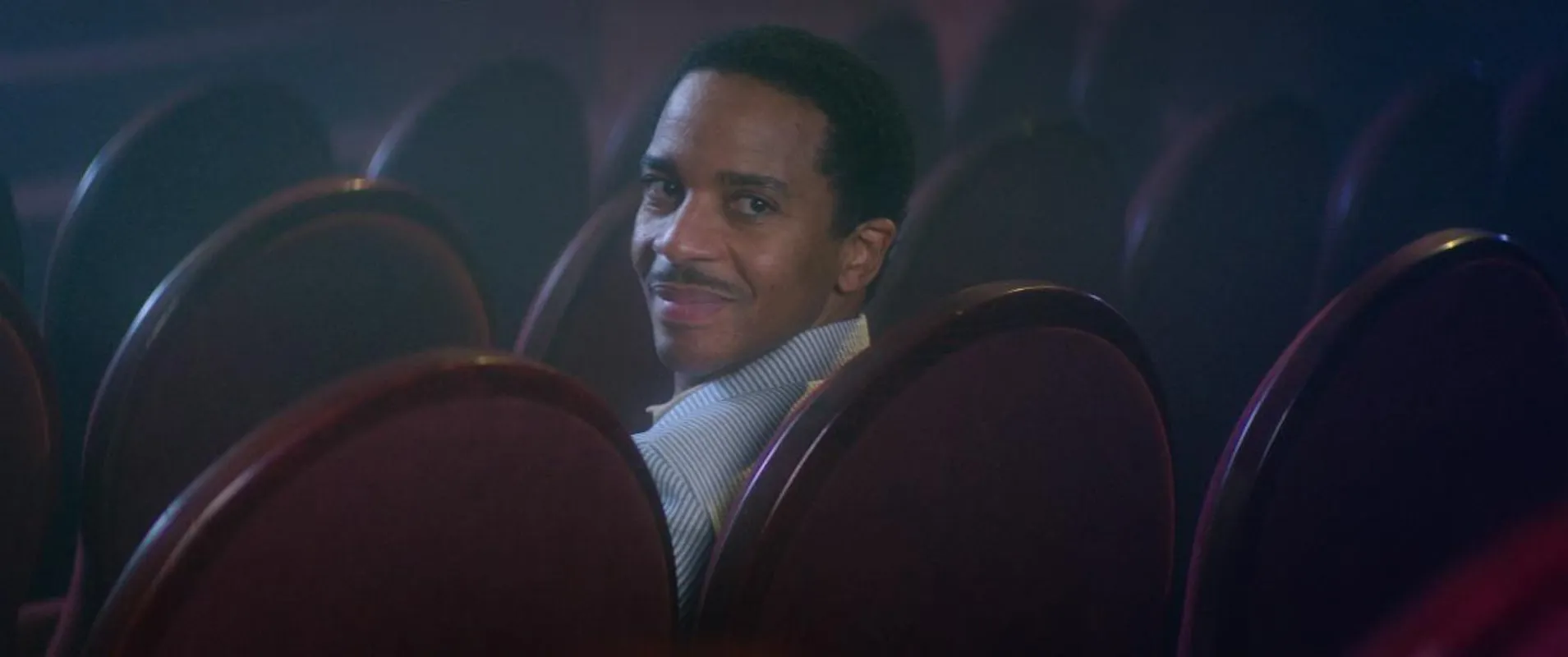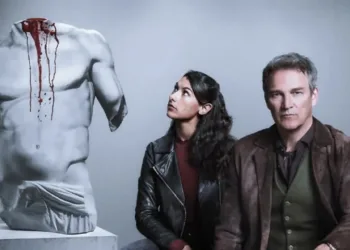The Actor marks Duke Johnson’s first foray into live-action, an ambitious adaptation of Donald E. Westlake’s crime thriller Memory. Here is a film that reconfigures familiar noir motifs into an enigmatic stage of human recollection.
Set against the backdrop of mid-20th century America—a period that feels as both crisply defined and nebulously dreamlike as a half-remembered postcard—the film introduces us to a once-esteemed actor, now robbed of his past after a brutal assault. One might quip that his memory seems to have taken an unscheduled vacation.
The narrative paints a portrait of a man tasked with reinventing himself in an environment that is as unforgiving as it is mysteriously surreal. The plot’s premise is both literal and metaphorical: the protagonist’s search for identity mirrors the era’s own oscillation between tradition and modernity (an echo, perhaps, of societal shifts witnessed in history’s quieter revolutions).
The film’s design, replete with theatrical staging and visually striking ambiguity, invites the viewer to ponder the intricate interplay between memory and self-perception. There is a certain dry humor in watching a celebrated figure scramble to recall not just his lines, but his very essence.
Fractured Memories and Staged Realities
The film opens with a shock—a violent altercation in a hotel room that strips Paul Cole of his past in one brutal moment. In a scene that might make one raise an eyebrow (or smirk at its sheer audacity), Paul is rendered amnesiac after a forceful encounter, leaving him with nothing but a name and a vague sense of his former self.
The narrative promptly shifts from the fast-paced energy of New York City to the unassuming quiet of a small Ohio town. Here, the protagonist is forced to rebuild his life, a process that mirrors the way society often redefines itself after sudden upheavals (think of historical resets in the wake of major conflicts).
At the outset, we witness Paul’s initial shock and confusion as he grapples with a void where memories once resided. His struggle to form a new identity is portrayed through his mundane work at a tannery and his budding relationship with Edna—a subplot that serves as both a counterweight and a mirror to his internal disorder.
There are moments when the film’s pacing mirrors the repetitive nature of forgetting; each day seems to reassemble itself as if on cue, much like a clock that ticks in slow, deliberate intervals.
The staging of the scenes often blurs the line between tangible reality and theatrical artifice. Transitions are executed with a precision that recalls the cadence of a well-rehearsed play, where backdrops merge seamlessly, creating a setting that feels both constructed and evocative.
This structure not only accentuates the film’s noir heritage but also introduces a layer of surrealism reminiscent of an abstract painting coming to life. Key turning points arise as Paul confronts fragments of his past, forcing him to reconcile his former self with the person he must now assume—a process that is as disconcerting as it is thought-provoking (and, at times, darkly amusing).
Directorial Vision and Visual Aesthetics
Duke Johnson steps into live-action with a confidence honed by years of stop-motion work. His background in animation clearly shapes every frame, as if each shot were a carefully arranged diorama.
One might compare his approach to assembling a theatrical set on a shoestring budget, where every prop and backdrop seems to wink at the audience in a knowing, mischievous manner.
His decision to treat the narrative as a stage production transforms what could be a straightforward story into a playful exploration of human identity. (Imagine a rehearsal where every actor dons several masks.)
The film’s sets appear as meticulously constructed miniatures or painted canvases, lending a dream-like quality that reminds viewers of bygone eras—moments in history when art and life intermingled in unexpected ways.
A recurring cast of players, often identified simply as “the troupe,” takes on multiple roles, emphasizing that identity is not fixed but continuously reassembled like a puzzle with missing pieces. Johnson’s choice to sprinkle in stop-motion and miniature effects in key moments adds a layer of unreality that turns the familiar into something strangely otherworldly.
Editing choices punctuate the experience: abrupt cuts, gentle fades, and deliberate pans mirror the fractured state of the protagonist’s memory. Certain sequences bleed into one another with a fluidity that challenges our sense of time, as if the film itself were questioning the very nature of remembrance. The use of an amber, hazy light casts everything in a soft focus, evoking moods of nostalgia and uncertainty in equal measure.
At times, the stylistic decisions may seem at odds with the narrative’s clarity, but they serve to heighten the tension between a life reconstructed and a past left in tatters. There is a dry humor hidden in these visual quirks—a reminder that even as we reconstruct our own stories, some fragments remain irretrievably whimsical.
Masks and Mirrors of the Self
Paul’s plight becomes a mirror reflecting the inherent instability of selfhood—a state where memory is no steadfast anchor but a shifting tide. His condition offers a striking metaphor for the human predicament: the constant need to redefine who we are in the absence of a clear past. Imagine waking each day with a blank slate, compelled to craft a new version of yourself. (It’s like improvising a script on stage without a rehearsal.)
The film pits the familiar visage of a New York thespian against an unformed persona that emerges in a modest Ohio town. This duality resonates with historical moments when individuals or entire communities have had to reinvent themselves in the aftermath of disruption—be it social upheaval or personal loss.
Paul’s daily “reset” underscores a Sisyphean struggle; every morning brings a fresh opportunity (and an inevitable burden) to choose anew, a concept I like to call “identity iteration.”
Supporting characters further complicate this picture. Edna, with her steady, understated presence, acts as an emotional lodestar in the midst of Paul’s internal disarray. Her influence suggests that genuine connection might offer some stability amidst the flux.
Meanwhile, the ensemble—referred to simply as “the troupe”—embodies the notion that identity is performed, a series of roles rather than a single, immutable truth. Their shifting personas underscore a cultural commentary on the pressures of maintaining a façade in a society obsessed with success and reinvention (think of the countless historical figures forced to wear multiple hats in changing times).
This narrative invites us to ponder whether our constructed selves are truly authentic or merely masks worn in response to societal expectations. At times, the film’s approach appears contradictory, oscillating between a dry, almost clinical dissection of memory and moments of poignant vulnerability—a testament to the messy, unpredictable nature of self-definition.
Light, Shadow, and Soundscapes
The film employs a visual language marked by soft, hazy aesthetics that evoke a dream-like state. The cinematography uses natural light with precision, casting gentle shadows and creating an ambiance that is at once nostalgic and surreal.
Camera pans and fluid transitions mimic the elusive nature of memory—a series of ephemeral moments slipping through one’s grasp (think of recollections fading like old photographs). Short, almost imperceptible cuts lend a lyrical quality to the storytelling, suggesting that time is as mutable as the scenes unfolding before us.
Set design is equally inventive. The use of theatrical backlots and intricately crafted miniatures produces an environment that oscillates between authenticity and artifice. Spaces feel meticulously designed, almost as if they were crafted for a stage production rather than a cinematic experience.
This approach not only reflects the film’s fixation on performance but also prompts a reconsideration of what we perceive as real. The deliberate construction of these spaces, where every detail is designed to blur the line between a lived-in world and a constructed tableau, offers a visual commentary on how reality is often a series of well-rehearsed acts.
The musical score contributes significantly to the overall mood. A spectral, quavering soundscape weaves through the narrative, intensifying both moments of introspection and peaks of emotional tension.
Sound design and musical cues interact seamlessly with the visual elements, reinforcing the film’s exploration of memory’s impermanence and the poignant weight of each fleeting moment. There is a subtle humor in this orchestration—a reminder that even amidst artistic precision, life remains unpredictably imperfect.
Faces of Fragmented Truth
André Holland inhabits Paul Cole with a rawness that is both quietly powerful and subtly sardonic. His portrayal captures the disarray of a man stripped of his past, forced into a constant reinvention (imagine an actor performing without a script).
Every glance and hesitation on his face hints at a profound internal struggle—a silent conflict between the remnants of his former self and the nascent identity he must forge each day. His eyes, expressive in a nearly wordless way, communicate the gravity of his situation during moments when words fail, especially in scenes thick with unspoken pain.
Supporting this central performance is Gemma Chan, who plays Edna with a serene resolve that steadies Paul’s inner turmoil. Her quiet presence offers a counterweight to his disorientation, a gentle reminder that even in chaos, some connections anchor us.
The ensemble cast—referred to simply as “the troupe”—assumes various roles throughout the film, each shift underscoring the notion that identity is mutable and often performed. This repeated casting reinforces the idea that our public personas can be as fleeting as our recollections.
The film’s character dynamics mirror wider societal shifts seen during periods of intense social reordering. Paul’s internal conflict echoes the challenges faced by communities forced to reconstruct themselves after transformative historical events.
There is an irony here, too—a sort of dry humor in watching a man reinvent himself in a world where labels and roles are in constant flux (almost as if modern life is an endless series of auditions).
The interactions among the cast invite the viewer to question the nature of authenticity. Is what we see on screen a true reflection of the self, or merely a series of carefully curated performances? This ambiguity in performance, both individual and collective, leaves an impression that lingers, challenging our assumptions about memory, identity, and the roles we assume in society.
The Review
The Actor
The Actor offers a thought-provoking, visually arresting experience that invites introspection on memory and identity. Its experimental narrative and engaging performances leave a strong mark, sparking debates on the fluid nature of self in a rapidly changing world. While its unconventional approach might not cater to every taste, the film's artistic risks and emotional depth make it a significant, conversation-starting work.
PROS
- Intriguing visual aesthetics and set design
- Captivating central performance by André Holland
- Innovative narrative structure
CONS
- Disjointed pacing may challenge some viewers
- Experimental style can be polarizing




















































